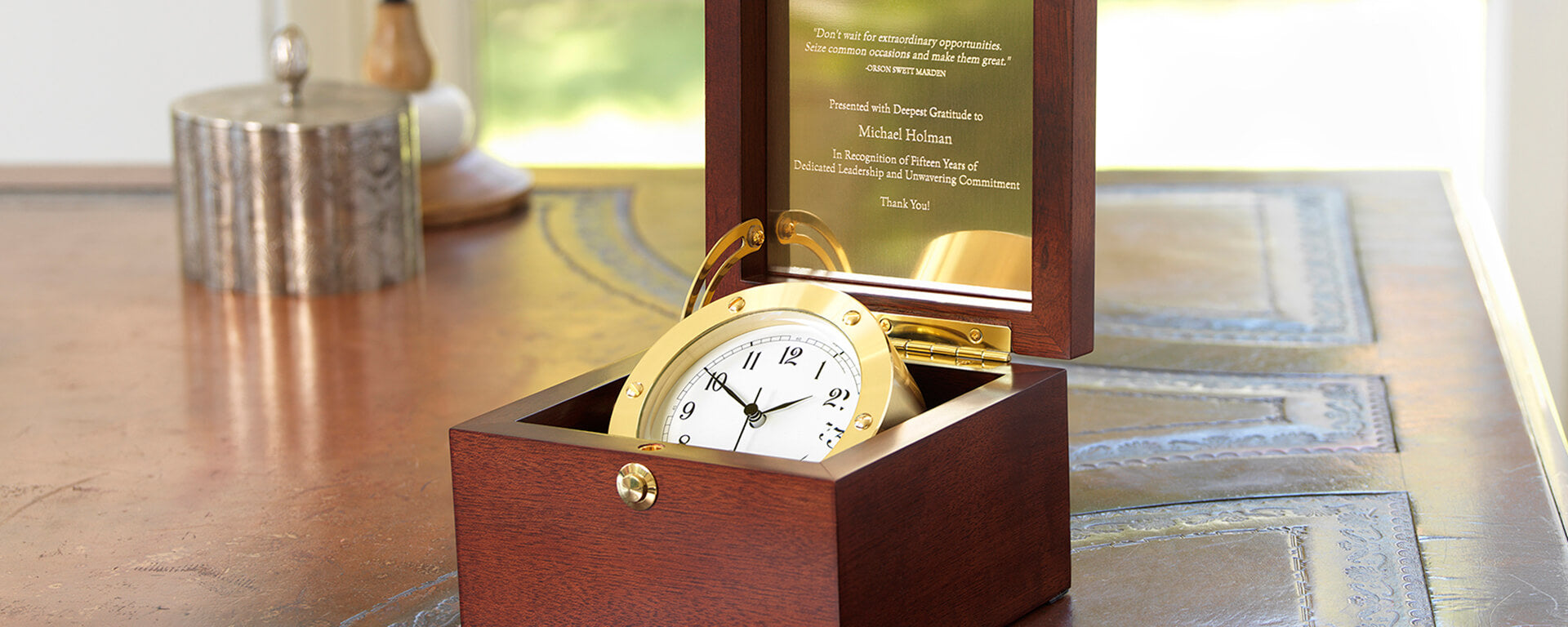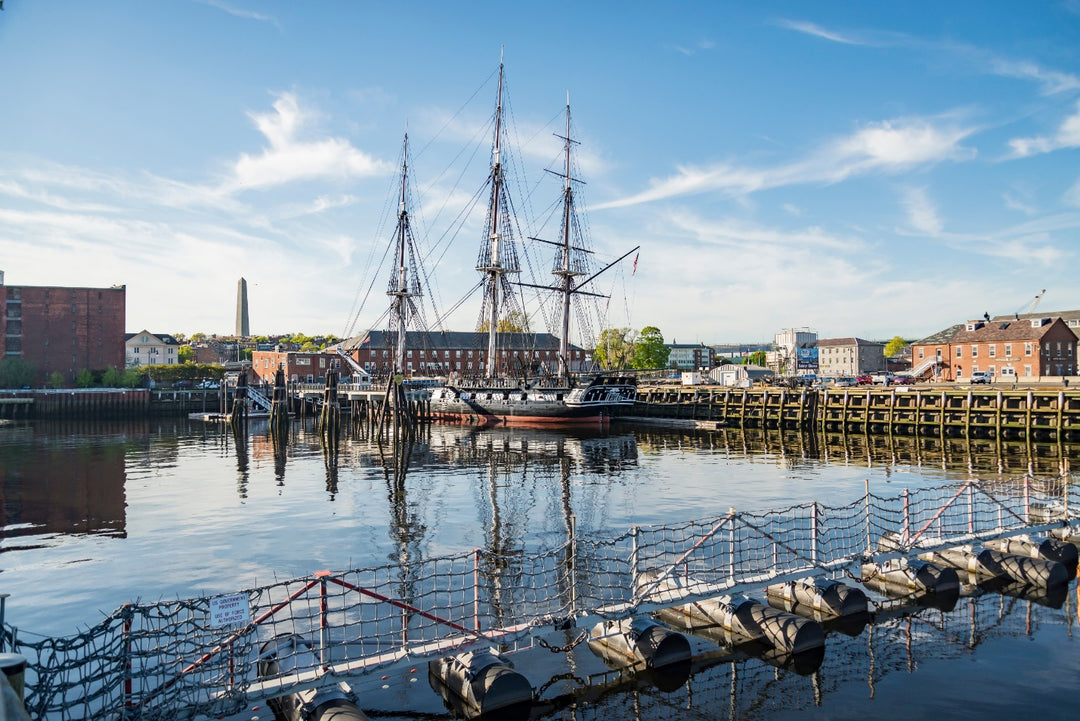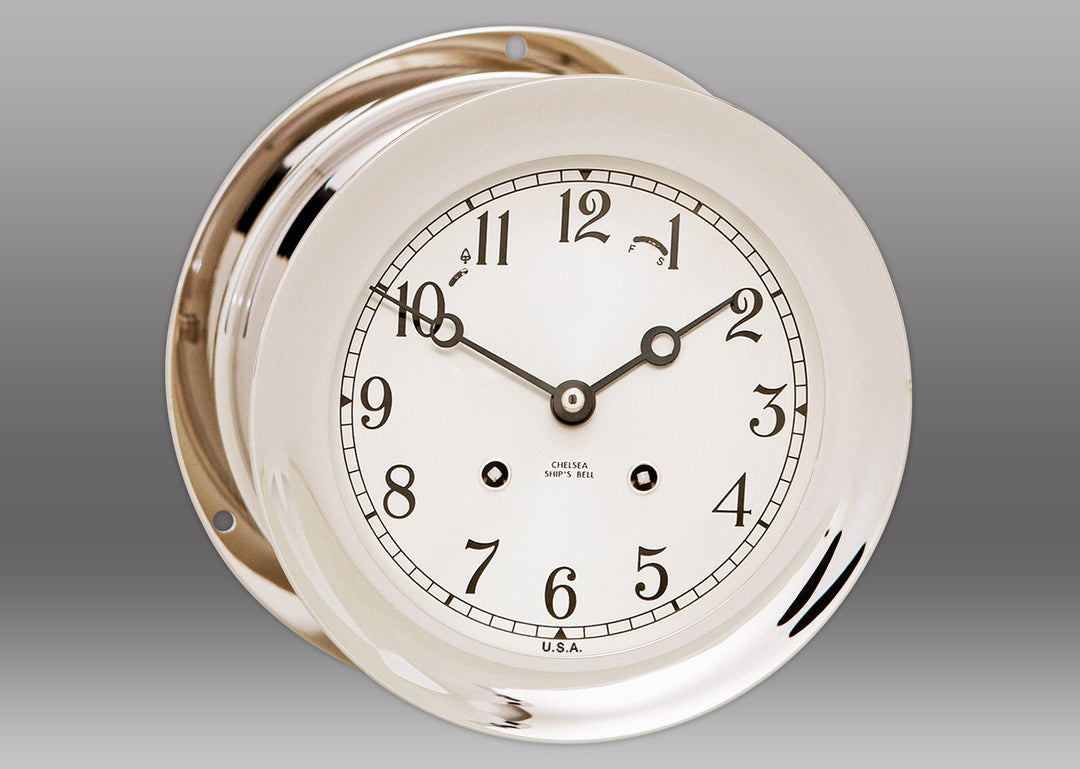Chelsea Clock Ship's Bell Rescued from 1942 Torpedoed Tanker


 Every now and again we receive heartfelt letters from readers whose lives have been touched by a Chelsea Clock. It's both an honor and a point of pride that so often our hand-crafted clocks become family heirlooms, passed from one generation to the next, in time taking on a life of their own -- retaining their own history throughout multiple lifetimes. We're delighted to share one such letter from a reader in New York, whose father rescued a Chelsea Clock from a sinking ship during WWII. (Note: This letter was transcribed from a handwritten note we received in the mail with the author's permission.)
Every now and again we receive heartfelt letters from readers whose lives have been touched by a Chelsea Clock. It's both an honor and a point of pride that so often our hand-crafted clocks become family heirlooms, passed from one generation to the next, in time taking on a life of their own -- retaining their own history throughout multiple lifetimes. We're delighted to share one such letter from a reader in New York, whose father rescued a Chelsea Clock from a sinking ship during WWII. (Note: This letter was transcribed from a handwritten note we received in the mail with the author's permission.)
Dear Chelsea Clock,
I would like to tell you the story of my clock. My Dad, Mathew John Gutherz, grew up in Newark, New Jersey and as a teenager joined the Merchant Marines. During WWII, he was the chief engineer on an oil tanker, the M. S. Brilliant. In November 1942, they were in a convoy headed to Europe when the Brilliant was hit by a torpedo from a German submarine. After putting out the fire, the Brilliant limped back to St. John's, Newfoundland, for repairs. Dad said these repairs would not hold up in the storms of the January North Atlantic, but he was told again to take the ship to New York. Lo and behold they ran into "the worst storm" Dad "ever saw" and the ship split in half. My dad was on the side with the engines. He said they would keep the engines going and so stay afloat longer. They drifted for a few days until they were spotted by another ship. Dad took this clock off the wall in his cabin and put it, his engineering books, and a fur coat for my mother in his seabag, and said, "I've got coffee, tea, and sugar in this bag!" The men yelled, "Throw it down! Throw it on!"
So you see how much this clock means to me and my family! One of the men took pictures
Along with photo copies of the wreck and rescue, Ms. Evans sent along a copy of a newspaper feature story for which the headline reads: "Thrilling Tale of Rescue From Torpedoed Ship Told by East Brunswick Sailor: Matthew

Patricia's clock is a 6-inch brass ship's bell. Does your clock have a story to tell? Drop us a line at newsletter@chelseaclock.com.It was shortly before dawn one morning late in 1942 that Gutherz, asleep in his quarters, was awakened by a noise so loud that for a brief sleepy instant, as he put it, "I thought one of the young sailors had slammed the heavy deck door next to my ear." But instantly, the vibrations and shuddering of the ship made him realize they had been hit.
"Afraid? Of course! Anyone who says he isn't, is lying!" Nevertheless he sprang from his bunk and in less than a second had his shoes and life belt on.
Naturally the men on board had always been on the alert for just such an emergency, and each man knew the things to be done. The cook, who was up and preparing breakfast when the ship was struck, reached the master valve first. When he turned this off, the ship's engines automatically stopped. The ship was enveloped in flames, so the first thing Chief Engineer Gutherz did was to turn on the steam-smothering line which throws a blanket of steam over the cargo holds. Then he rushed below and started the gyro-compass and checked the telegraph from the bridge to the engine room.
Unfortunately in a convoy, if your ship is struck or runs into some difficulty, you're on your own as the other boats must go on.
"For awhile," relates Gutherz, "it looked bad. The oil had spurted on the mast and deck and everything in sight seemed to be burning furiously. Just imagine burning oil, leaping and spraying like a million Fourth of July rockets. You had to keep on the jump every minute dodging balls of fire."
At this point, with the ship a flaming target silhouetted against the gray morning, the captain decided the situation was hopeless and he, along with the first, second, and third mates, left the ship in a lifeboat. But the rest of the crew worked feverishly to put out the flames.
"I didn't care what the 'Old Man' did," says Gutherz. "My motto is 'Never leave a ship until the water is up to your hips.' And you see, I was right."
Following directions wired by a Navy ship... they wandered around, losing the course at one time but finally encountered a fishing smack which led them to a port. It was just a small fishing village and hope of repairing the tanker soon faded. The one cheerful note was that despite a 60-foot hole at one end of the boat, at least two-thirds of the valuable cargo had been saved.
They decided to try for home but this attempt failed, for the sea was too stormy. "After being out about 30 hours we ran into the worst storm I've ever encountered in all my years at sea," relates Gutherz. "Sleet, fog, and mist were so thick all around that you actually couldn't see beyond a few feet. The ship was getting thrown around like a sheet of paper in the wind and it seemed as if mountains of water were pouring down on us."
Suddenly the weakened bulkheads gave way under the terrific pounding and the boat broke in two, amidships. The forward end disappeared almost immediately. One of the nine men forward shouted something above the din of the sea and that was the last seen or heard of them.
Near the end of the third day they were sighted by an Army bomber which directed a corvette to their rescue. Since launching the lifeboat was impossible, the corvette flung a net to the boat to be used as a ladder. Every one of the 35 men made it, but they suffered greatly from driving wind and cold.
Back now in East Brunswick, Chief Engineer Gutherz is almost completely recovered. It would be nice to stay home infinitely, but every hour the ship's clock, which hangs in the kitchen of his home, calls the watches. He knows he must soon be on his way. No seaman can resist the call. He will be leaving shortly for another trip on the tankers.









